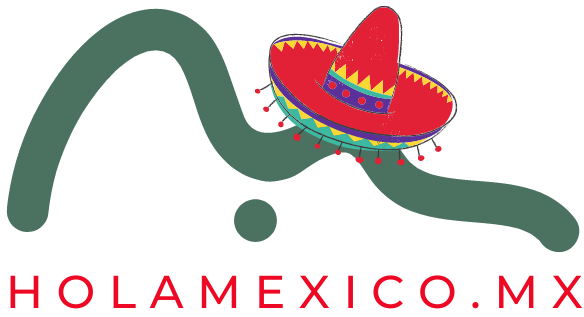Shortening is a solid fat made from vegetable oils, typically hydrogenated to solidify at room temperature. It is a popular cooking fat used in various culinary applications, including baking, frying, and making pastries. In Mexican cuisine, while traditional fats like lard have historically been prevalent, shortening is also utilized, especially in baking certain goods.
Differences from Other Cooking Fats and Oils:
- Solid at Room Temperature: Unlike oils that remain liquid at room temperature, shortening is solid, giving it a creamy or solid consistency.
- Hydrogenation: Shortening undergoes hydrogenation, a process that involves adding hydrogen to liquid vegetable oils to solidify them. This process also makes shortening shelf-stable and resistant to rancidity.
- Neutral Flavor: Shortening typically has a neutral flavor, unlike fats such as butter or lard, allowing it to lend itself well to various recipes without imparting a distinct taste.
Unique Qualities Contributing to its Application in Mexican Dishes:
- Baking: Shortening is often used in Mexican baking for items like pastries, cookies, and some bread recipes. It helps create a tender and flaky texture in baked goods due to its solid state at room temperature.
- Texture Enhancement: In certain recipes like empanadas or tamales, shortening can contribute to achieving a desirable texture, providing a light and flaky crust or dough.
- Longer Shelf Life: Shortening’s hydrogenation process gives it a longer shelf life compared to some other cooking fats, making it a convenient and stable ingredient for cooking and baking purposes.
In Mexican cuisine, shortening is used alongside other fats like lard and vegetable oils, offering versatility in achieving specific textures and characteristics in baked goods and certain dishes. Its solid consistency and neutral flavor make it a valuable ingredient, especially in recipes where a flaky or tender texture is desired without imparting additional flavors.
Shortening is a solid fat made primarily from vegetable oils, such as soybean, cottonseed, or palm oil. The oils are typically hydrogenated, a process that involves adding hydrogen to liquid vegetable oils to solidify them at room temperature, resulting in a semi-solid or solid fat.
Production or Manufacturing Process of Shortening for Culinary Use:
The manufacturing process of shortening involves hydrogenation and other steps:
- Hydrogenation: Liquid vegetable oils are subjected to hydrogenation, a process in which hydrogen is added under high pressure and heat, converting the liquid oil into a semi-solid or solid fat.
- Deodorization and Refining: The hydrogenated fat might undergo further refining processes to remove impurities and neutralize odors, resulting in a more stable, flavorless, and odorless product.
- Packaging: The processed shortening is then packaged for distribution and culinary use.
Types or Variations of Shortening in Mexican Cooking:
In Mexican cooking, similar to other cuisines, variations of shortening are used. These may include:
- Vegetable Shortening: This is the most common type, typically made from hydrogenated vegetable oils like soybean, palm, or cottonseed oil. It is often flavorless and has a semi-solid or solid consistency at room temperature.
- Lard-Based Shortening: In some cases, shortening might be derived from animal fats like lard, which is solid at room temperature. While not as common as vegetable-based shortening, it can be used in Mexican recipes where lard is traditionally employed.
- Blended Shortenings: Some commercially available shortenings may be a blend of different fats, aiming to achieve specific textures or properties suitable for various culinary applications.
While vegetable-based shortening is more commonly used in Mexican cooking, the choice of shortening can vary based on the recipe and the desired qualities, such as texture, flavor, and shelf stability. Shortening’s ability to remain solid at room temperature and its neutral flavor profile make it a versatile fat for baking and certain cooking applications in Mexican cuisine.
Traditional Use of Shortening in Mexican Recipes:
Shortening is utilized in various ways in Mexican cuisine, especially in baking and certain cooking methods:
- Baking: Shortening is commonly used in baking traditional Mexican pastries, such as empanadas, sweet bread (pan dulce), and certain types of cookies. Its solid form at room temperature contributes to the desired texture in these baked goods.
- Tortillas: In some regions and recipes, shortening might be used in making flour tortillas, contributing to their texture and pliability.
- Pie Crusts: Shortening is used to create tender and flaky crusts for pies, adding to the overall texture of the dish.
Advantages of Using Shortening in Mexican Cooking:
- Texture Enhancement: Shortening contributes to achieving specific textures in baked goods, providing tenderness, flakiness, and a light mouthfeel.
- Ease of Use: Its solid state at room temperature makes shortening convenient for blending into flour for pastries and dough without the need for melting, unlike butter.
- Neutral Flavor: Shortening has a neutral taste, allowing other flavors in the dish to stand out without overwhelming them.
Specific Mexican Dishes Where Shortening Is Preferred or Essential:
- Empanadas: Shortening is commonly used in the dough for empanadas to create a flaky and tender crust that complements various fillings.
- Pan Dulce (Sweet Bread): Traditional Mexican sweet bread often includes shortening in the dough to achieve a soft and airy texture.
- Certain Cookies: Shortening might be included in the recipes of certain Mexican cookies to ensure a desired texture and mouthfeel.
While the use of shortening in Mexican cuisine, particularly in baking, has been traditional, there has been a shift in recent times due to health concerns related to trans fats and high levels of saturated fats in some types of shortening. However, shortening remains an ingredient in some classic recipes, contributing to the distinct textures and flavors of these traditional Mexican dishes.
Nutritional Composition of Shortening:
Shortening primarily contains fats, typically saturated and trans fats, due to the hydrogenation process used to solidify the liquid vegetable oils. The specific nutritional components of shortening can vary, but generally include:
- Saturated Fat: Shortening is high in saturated fats, which are solid at room temperature and have been associated with raising LDL (bad) cholesterol levels when consumed in excess.
- Trans Fat: Hydrogenation can create trans fats in shortening, which are considered particularly unhealthy and have been linked to increased risk of heart disease and other health issues.
- Calories: Like all fats, shortening is calorie-dense, providing around 9 calories per gram.
- Lack of Nutrients: Shortening typically lacks significant vitamins or minerals, as the refining processes remove many of the nutrients present in the original oils.
Contribution to Texture and Structure in Mexican Dishes:
Shortening plays a crucial role in the texture and structure of various Mexican dishes, especially in baking. Its qualities contribute to:
- Flakiness: In pastries like empanadas, shortening helps create a flaky and tender texture, enhancing the eating experience.
- Tender Crusts: Shortening contributes to creating tender and soft crusts in baked goods like tarts, pies, or certain types of bread.
- Leavening Agent Interaction: In baking, shortening’s ability to interact with leavening agents like baking powder or baking soda can affect the rise and texture of certain baked items.
Health Considerations and Misconceptions Regarding the Use of Shortening:
- Trans Fats: Hydrogenation used in the production of shortening creates trans fats, which are considered unhealthy and have been linked to increased risks of heart disease and other health issues. Some shortening products may claim to be “trans-fat free,” but it’s essential to check labels for partially hydrogenated oils, which can still contain small amounts of trans fats.
- Saturated Fats: Shortening is high in saturated fats, which, when consumed in large amounts, can raise LDL cholesterol levels, potentially increasing the risk of heart disease.
- Healthier Alternatives: Due to concerns about trans fats and high levels of saturated fats, some health-conscious individuals and professionals advocate for using alternatives like healthier oils or fats (e.g., olive oil, coconut oil in moderation) or butter in moderation instead of shortening.
When using shortening in cooking or baking, moderation is essential. Health considerations suggest limiting the intake of foods high in trans fats and saturated fats to maintain a balanced diet and minimize associated health risks.
Considerations When Purchasing or Sourcing Shortening:
- Ingredients: Check the label for the ingredient list. Opt for shortening that contains fewer additives or preservatives. Some brands may offer non-hydrogenated versions that might be healthier options.
- Quality: Look for reputable brands known for producing high-quality shortening. Consider organic or all-natural options if available.
- Trans Fat Content: Check the label for partially hydrogenated oils, which indicate the presence of trans fats. Opt for products labeled “trans-fat-free” or those made without hydrogenated oils for a healthier choice.
- Purpose: Choose the type of shortening that suits your intended culinary use, whether for baking pastries, pie crusts, or other specific recipes.
Variations in Quality or Types of Shortening Available:
- Vegetable Shortening: The most common type, typically made from hydrogenated vegetable oils like soybean, palm, or cottonseed oil. Some brands offer non-hydrogenated versions or those with reduced trans fats.
- Lard-Based Shortening: While less common, some shortening products might be lard-based, which can be preferred in certain recipes or for those seeking a more traditional flavor.
- Organic or Non-GMO Shortening: Brands may offer organic or non-GMO options that cater to consumers looking for higher quality or specific production standards.
Best Practices for Storing Shortening to Maintain Freshness:
- Cool Storage: Store shortening in a cool, dry place away from direct sunlight and heat sources, as exposure to warmth can cause it to soften or spoil.
- Airtight Container: Once opened, keep shortening in an airtight container to prevent exposure to air, which can lead to oxidation and rancidity.
- Refrigeration (Optional): While shortening is shelf-stable, refrigerating it can extend its shelf life, especially in warmer climates. If desired, portion it into smaller amounts and freeze what won’t be used soon.
- Seal Container Properly: Ensure the container is tightly sealed after each use to prevent moisture from entering, which could lead to spoilage.
- Use-by Date: Observe the expiration or best-by date on the packaging and try to use the shortening within that period for optimal freshness.
By considering these factors when purchasing, understanding the available variations, and practicing proper storage methods, you can maintain the freshness and quality of your shortening for an extended period, ensuring better results in your culinary endeavors.




